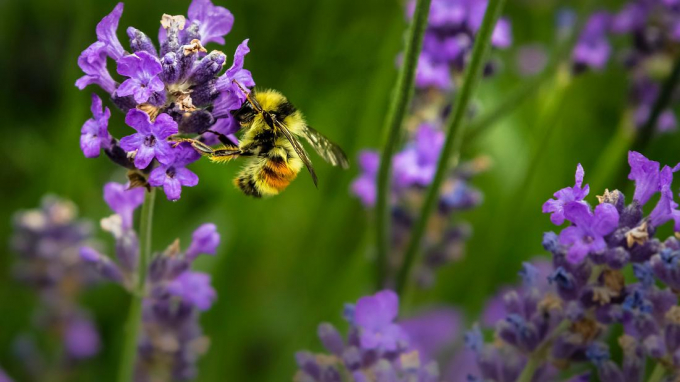November 27, 2025 | 01:51 GMT +7
November 27, 2025 | 01:51 GMT +7
Hotline: 0913.378.918
November 27, 2025 | 01:51 GMT +7
Hotline: 0913.378.918

Increase native pollinating insect populations by planting wildflowers in your garden. Photo: Jenna Lee
The “Weed Thriller”, created by Sunart Fields, won the gold medal at the Tatton Flower Show in Cheshire. Described as a ‘distilled version’ of the rewilded fields at their former dairy farm in Derbyshire, the display was a mixture of native plants which the creators feel are wrongly categorised as weeds by many gardeners.
After winning the prize, horticulturist Sandra Nock told the BBC, “Without this kind of multi-layer native planting, a lot of our insects and birds just wouldn’t cope.”
The plot contained ragwort, hawthorn and ladythorn - all ‘weeds’ native to the UK.
Concerns over bee populations have been high among governments and citizens in recent years as climate change and habitat destruction threaten our nectar-loving friends.
In the UK, the bee population has gone from fulfilling 70 per cent of pollination needs in 1980 to 34 per cent today. In the US, the bee population has declined by up to 40 per cent. Meanwhile in Europe, one in 10 species of bee and butterfly are at risk of extinction.
Intensive agriculture practices such as monocropping and pesticides are bad for the bees - however, while this is the main contributor to bee population decline there are things you can do at home (literally).
Suburban neighbourhoods full of manicured lawns can be as bad for bee populations as vast expanses of concrete, with grass providing no opportunity for pollination and even emitting more carbon than it sequesters thanks to the effort that goes into maintaining it.
Campaigns have sprung up such as ‘no-mow May’ which encourages people to put away their lawn mowers and allow their gardens to cultivate pollinating plants for bees and other hovering insects.
Other alternatives involve seeding a blend of grass including fescues rather than turf or planting edible plants that bees love to pollinate.
Recently, concerns were raised over the growth in urban beekeeping, with well-intentioned citizens keeping hives of honeybees to increase local bee populations inadvertently threatening other species.
A better way to increase bee populations is by creating pollinating habitats and turning your garden into a native pollinator paradise.
A great way to achieve this is to ensure you have a mixture of flowering plants that bloom in different seasons and always plant flowers which are native to your country or area (if you’re in France stick to native western-european species for example).
Native plants are easy to grow and are often pest resistant, not to mention they have evolved alongside native pollinators so the two are quite literally made for each other. In addition to these, native species of flowering trees (cherry, apple and willow for example) are great for bees and other pollinators as they have multiple flowers at once.
Diversity is key: ensure a mixture of colours and shapes in your pollinator attracting plants and above all never, ever use pesticides.
Finally, follow the Sunart Fields example and leave the weeds where they are. Dandelions may be unsightly but they are often the first flowers of the year for bees to land on.
(ERN)

(VAN) A new study reveals how the simultaneous effects of ocean acidification, salinity and loss of oxygen are making the world more fragile.

(VAN) Hopes are growing that the creation of the first 3D turkey gut model could be a turning point in the battle against the virulent blackhead disease.

(VAN) Tyson, America’s biggest meat supplier, plans to shutter one of its largest beef processing plants as the industry continues to struggle with low cattle supplies and political pressure from Washington.

(VAN) New FAO study shows how digital solutions are empowering farmers and fishers to prevent losses and build resilient agrifood systems.

(VAN) Brazil's COP30 presidency pushed through a compromise climate deal on Saturday that would boost finance for poor nations coping with global warming but that omitted any mention of the fossil fuels driving it.

(VAN) Poultry farmers in the UK have been warned that they could face one of the worst winters yet for bird flu.

(VAN) Prices of main-crop paddy have risen sharply, with jasmine rice hitting 16,100 baht per tonne — the highest level in years.